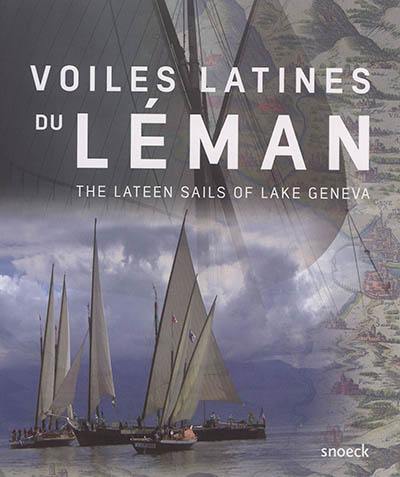
Fiche technique
Format : Broché
Nb de pages : 127 pages
Poids : 802 g
Dimensions : 24cm X 28cm
ISBN : 978-94-6161-355-4
EAN : 9789461613554
Voiles latines du Léman
Quatrième de couverture
Voiles latines du Léman
Les habitants des rives du lac Léman savent bien que les barques à voiles latines transportaient les pierres de Meillerie qui ont servi à la construction des villes modernes du pourtour lacustre. Ils ignorent plus souvent que l'introduction de la voile latine sur le Léman remonte au XIIe siècle, à l'ambition des ducs de Savoie de devenir rois. Depuis leur château de Chillon, ils convoitent la cité prospère de Genève et entendent contrôler cette grande voie commerciale qui de Gênes et de Venise alimente ses foires : ils créent la flotte de galères de Chillon. La voile latine équipe ainsi rapidement les bateaux de guerre du Léman. L'invention en 1691 d'une galère mi-marchande mi-guerrière revient aux Bernois soucieux de rentabiliser ces bateaux en temps de paix. De guerrière, la voile latine devient marchande et s'impose sur le lac dès le XVIIIe siècle, entraînant la disparition des antiques naus à voiles carrées. Après une période d'apogée inattendue à la Belle Époque, l'amélioration des transports et l'usage du béton annoncent son déclin inexorable. Deux barques ont survécu et naviguent aujourd'hui à la plaisance ainsi que des répliques, maintenant alors une longue et riche tradition nautique. C'est cette histoire que se propose de raconter l'exposition présentée à la Maison Gribaldi à travers de nombreux documents, objets, maquettes et peintures provenant de collections suisses et françaises. Les barques du Léman continuent donc à être ce qu'elles ont toujours été, un trait d'union entre les rives.
The lateen sails of lake Geneva
People living on the shores of Lake Geneva are well aware that lateen-sailed barques transported the stones from Meillerie used to build the modern towns which sprang up around the lake. However they usually do not know that the introduction of the lateen sail to Lake Geneva dates back to the 12th century, and stems from the aim of the dukes of Savoy to become kings. From their castle at Chillon, the dukes coveted the thriving city of Geneva and longed to control that great commercial thoroughfare from Genoa and Venice that provided its fairs with goods : this was how the Chillon galley fleet came to see the light of day. The use of lateen sails then quickly spread to the warships of Lake Geneva. The invention, in 1691, of a half-merchant, half-war galley was the brainchild of the Bernese, eager to make these vessels profitable in times of peace. The lateen sail changed from warmongering to commerce, and became the standard sail on the lake in the 18th century, resulting in the disappearance of the ancient square-sailed naus. After an unpredicted peak during the period of the Belle Époque, the improvement of transport and the use of concrete led to its inexorable decline. Two of the oiginal barques have survived are used today, along with replicas, as pleasure boats, thus upholding a rich and long-lasting nautical tradition. It is this history which the show at the Maison Gribaldi seeks to portray through numerous documents, objects, models and paintings from Swiss and French collections. In this way, the barques of Lake Geneva will carry on being what they have always been-a link between the shores.





